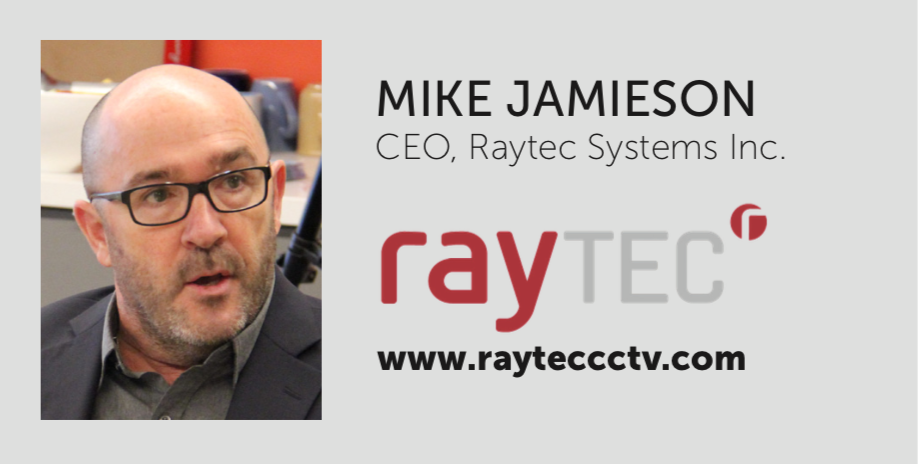
Q&A: Mike Jamieson, CEO, Raytec Systems Inc.
By Canadian Security staff
News Cannabis Security RoundtableSponsored by

Canadian Security: What do you bring to the cannabis market?
Mike Jamieson: What we bring to the cannabis market in Canada is an expertise in lighting for security and safety. We consider ourselves to be subject matter experts in security lightning in this vertical market. In the cannabis growing industry, perimeter lighting and interior lighting is very important. There are a lot of myths out there that infrared lighting affects the growing cycle and physiology of plants, which it doesn’t. We have letters from university professors that we can share with our customers that dispel these myths.
CS: Have you managed to solve any unique challenges to the cannabis market?
MJ: Specific to cannabis, I would say a lot of it is, “How can we do this for the least amount of money?” There are also some beliefs that cameras with built-in illuminators will solve all the problems. They are very good for short distances, but especially outdoors or in the larger parts of the growing facility, they’re just not as adequate as they should be.
CS: What opportunities does the cannabis market present for your company?
MJ: We have been involved in it from the very, very beginning, so even when it was medical there were still requirements for security lightning. What we’ve noticed now is the fact that, as it’s progressed over the last few years, it has become more standard. The inspectors have a better understanding of what’s expected, so we’re seeing it to be much easier to do a design around the regulations.
CS: How are you working with integrators?
MJ: If they’re an integrator that is brand new to the cannabis industry, then we realize we need to start right from the beginning to explain that there are regulations that can’t be taken as literally as they sound because they are too ambiguous. If they go by the basics of the regulations then their license will be rejected, and they will have to do some last-minute changes. What we do is show them designs going back years because what we do is a full design. In the regulation, it says “adequate lighting” but, for us, adequate lighting is basically a 10-page 2D and 3D lighting design that shows all the levels of illumination. We’ll show them this is what gets accepted and this is what doesn’t get accepted and you have this opportunity now to do it or don’t do it. Generally, if they are new to it they’ll do it. We’ve done projects with integrators before on multiple sites and provinces and we’ve learned from the mistakes made and can pass on that experience to them.
CS: Has it been a learning process as this product has got up and running?
MJ: Absolutely. In Canada, it’s been fairly straightforward. At the very beginning, if the license didn’t get accepted, we would have to add additional lamps and cameras. It was just really mechanical. In the USA, and now in Columbia and Mexico, we’re finding it really is completely up to the individual putting together the specification to hope that they pass. So, we’ll take what we learned here, we’ll bring it to them, but they don’t always accept it and then, again, it’s a last- minute shipping of equipment to get their license.
Print this page
Advertisement
- Brink’s to acquire most of G4S’s cash operations
- VIDEO: Cannabis Security Cannabis Roundtable: Raytec Systems Inc.
Leave a Reply